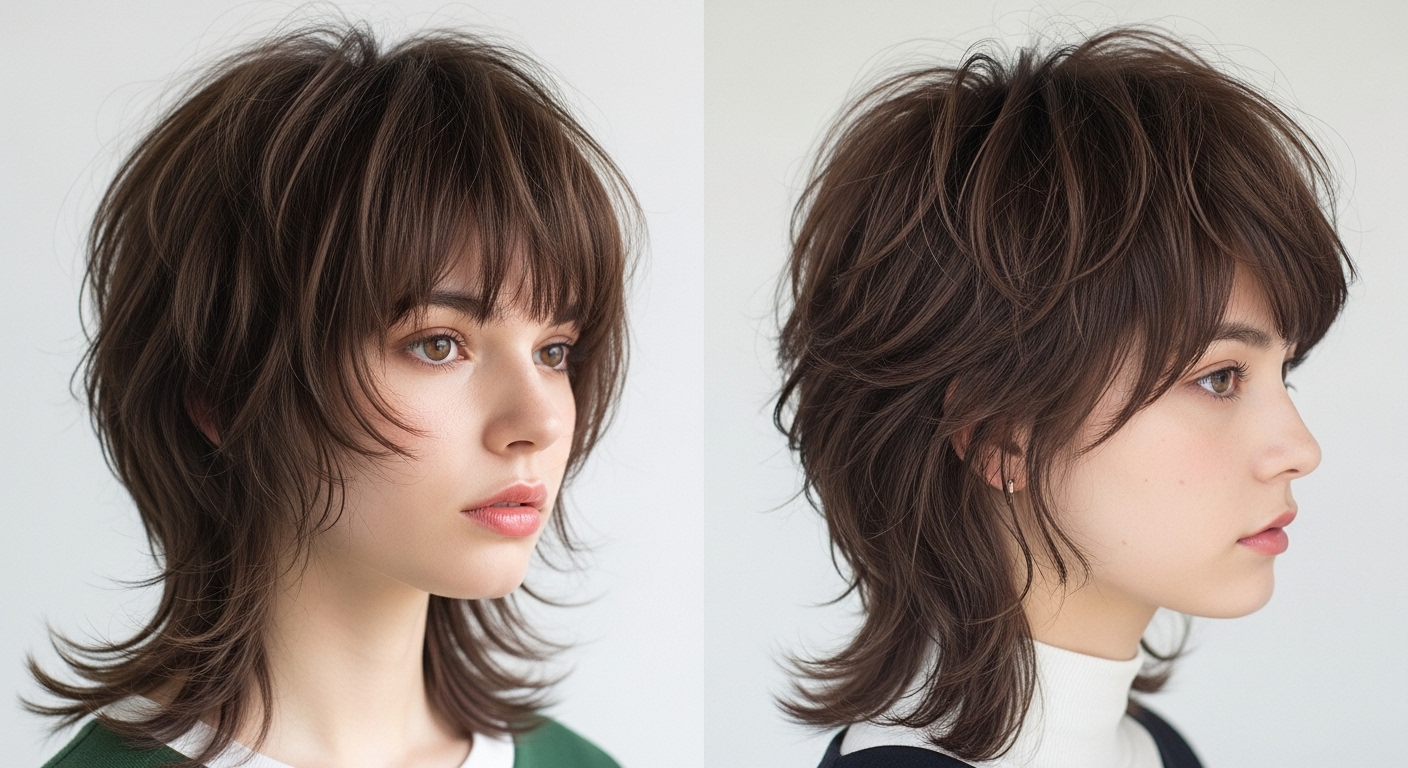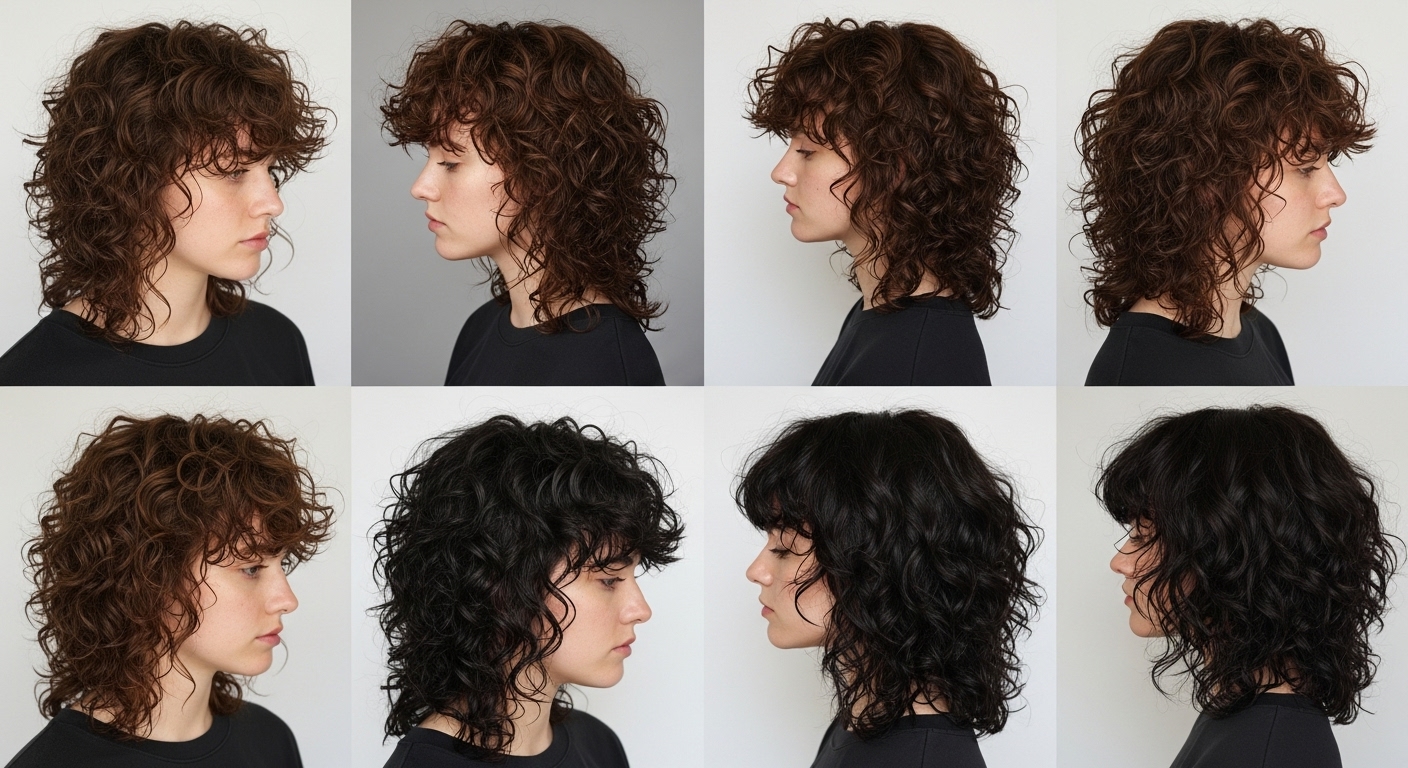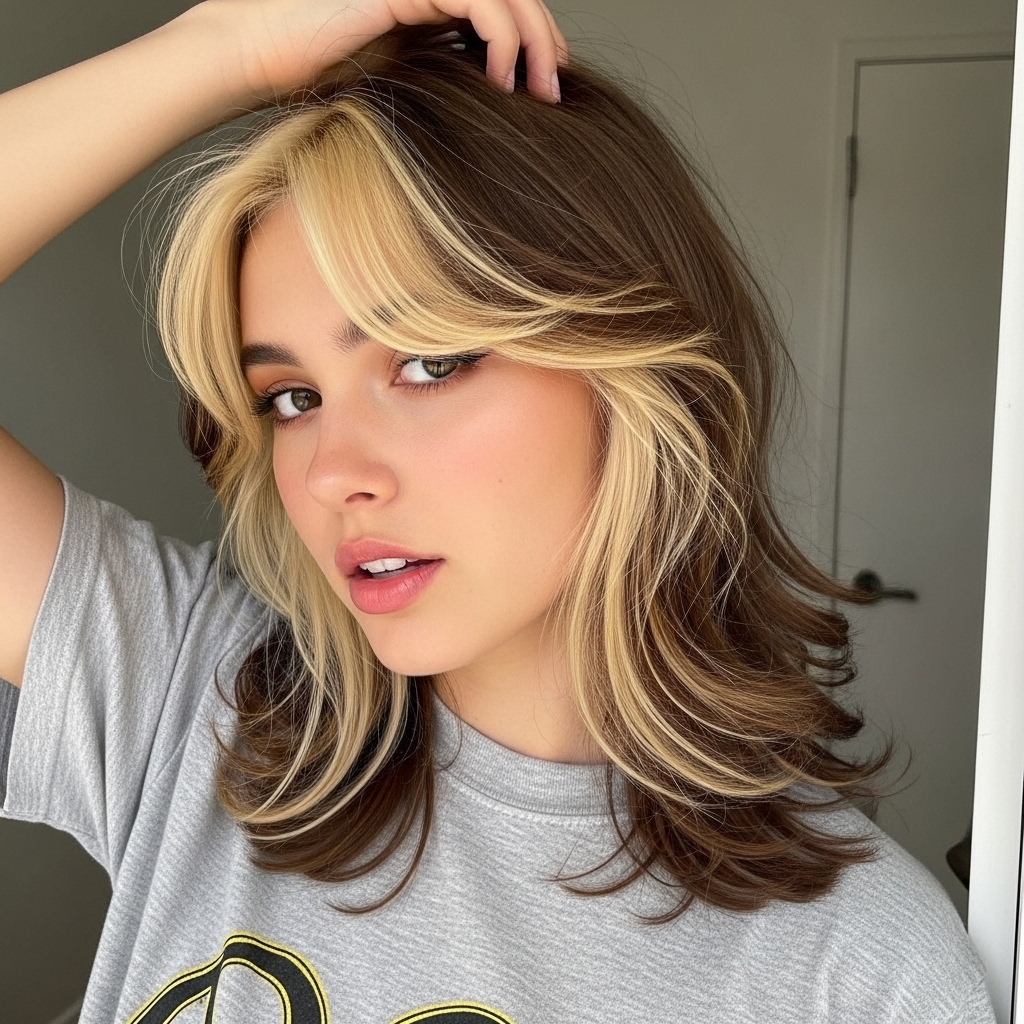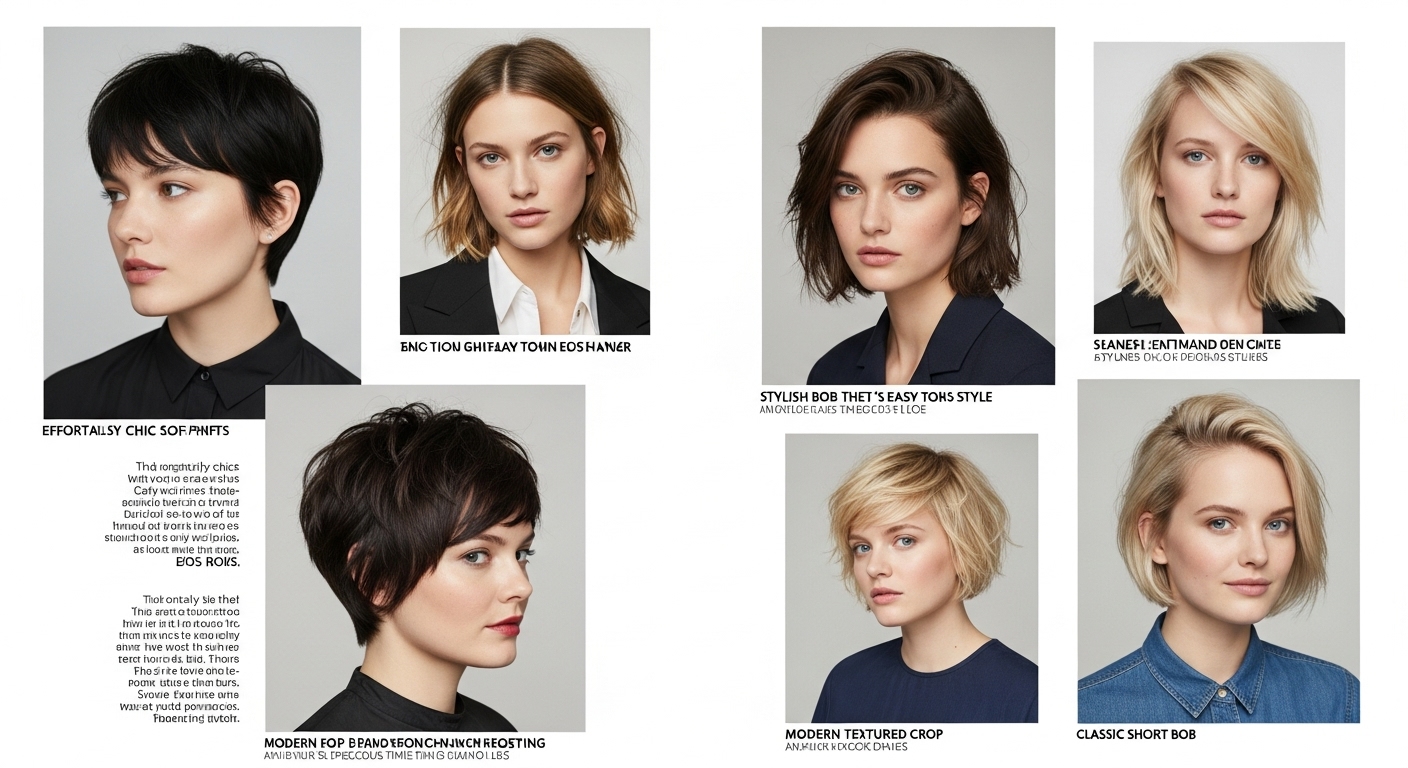These are two entirely different types of hairdos that can change your look. In this case, the shag hairdo, as it is being brought back from the ’70s, is all about soft, choppy layers and a feeling of not having styled hair. On the other hand, wolf cut, a hairdo of the Gen Z, is a more daring, thoroughly rejuvenated hairdo- one that has a lot of volume at the crown. Both are equally cool, but if you are still reluctant to know which one is a better fit for your fashion, this blog will show you the very basic comparison of shag haircut and wolf cut and give you a complete understanding of what you want at your next visit to the salon.
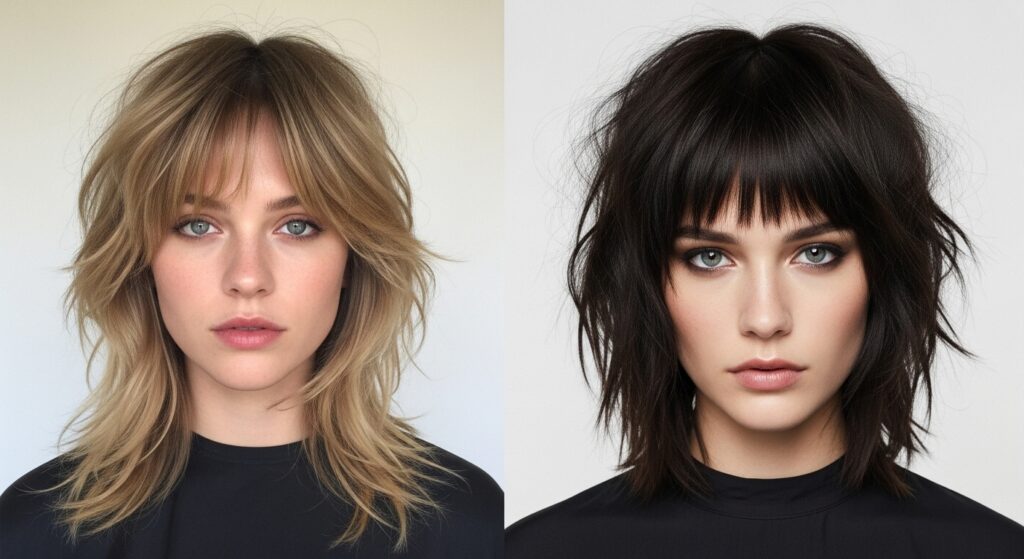
Where They Came From (The 70s vs TikTok)
In advance of our discussion of shapes and layers, it may be useful to trace the origin of these hairstyles.
- The shag haircut was actually born in the 1970s, e.g., rock icons such as Joan Jett and Stevie Nicks. The look was synonymous with a carefree, no doubt, but definitely sexy kind of a style thinly to thickly layered with volume.
- How about the wolf cut? That’s undoubtedly a baby of 2020s TikTok. It’s a mix of shag and mullet, yet the layers are even thicker and the front to back contrast is even more perceptible.
For instance, let’s see the shag as the ancient rock ‘n’ roll. The wolf cut? Gen Z’s extroverted rebellion—with a sprinkle of K-pop star energy.
One minute everyone’s obsessed with sleek bobs, and the next, we’re all craving choppy, messy layers that scream “effortlessly cool.” Enter the shag haircut and its trendy Gen Z cousin, the wolf cut. (And if you’re leaning toward short clean styles instead, check out the high taper haircut it’s having a moment with sharp fades and structured lines.)
Shag Haircut Breakdown
So, what actually makes a shag haircut a shag?
Texture
The texture is soft, feathered, and full of movement. A shag adds airy layers throughout, giving the hair bounce without bulk.
- Perfect for anyone with natural waves or curls
- Works great with lightweight styling products
- Doesn’t require heat to look good
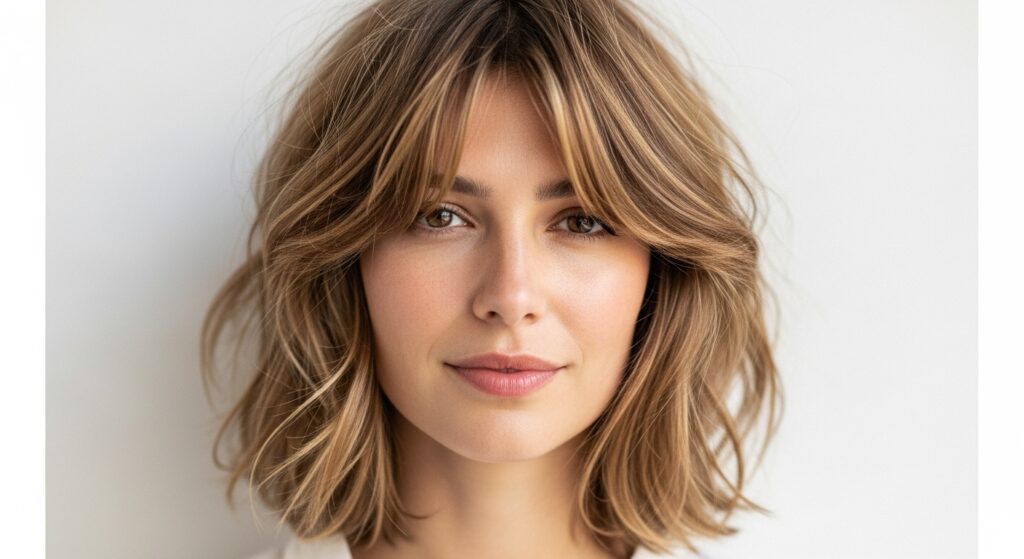
Shape
The shag has a rounded silhouette. There’s a ton of layering, sure—but the shape is more blended and gradual.
- Top layers create volume
- Mid-length layers reduce weight
- Ends look wispy, not blunt
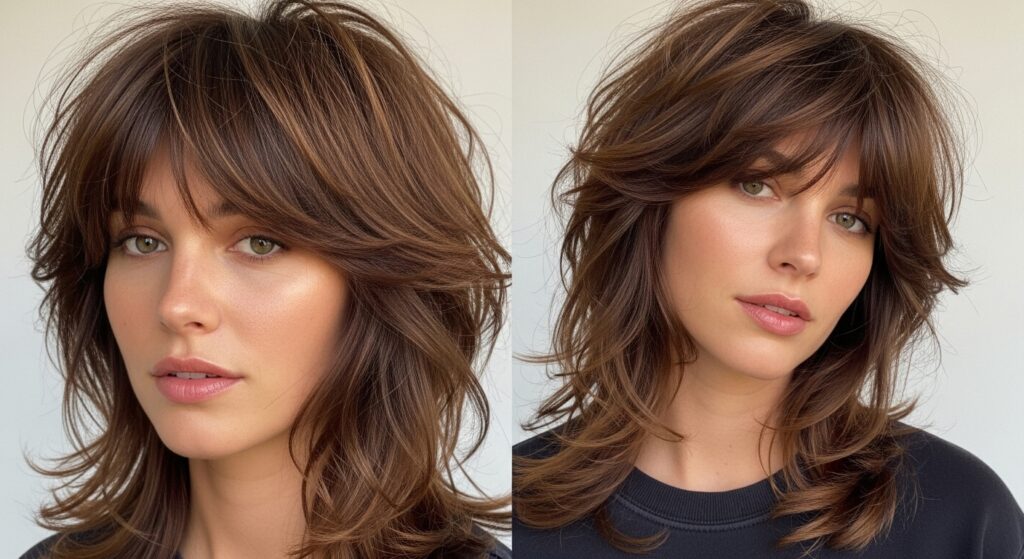
Face Framing
Ah yes, the best part. The shag’s built-in face framing does wonders for cheekbones and jawlines.
- Often paired with curtain or bottleneck bangs
- Softens the face without looking too styled
- Grows out beautifully
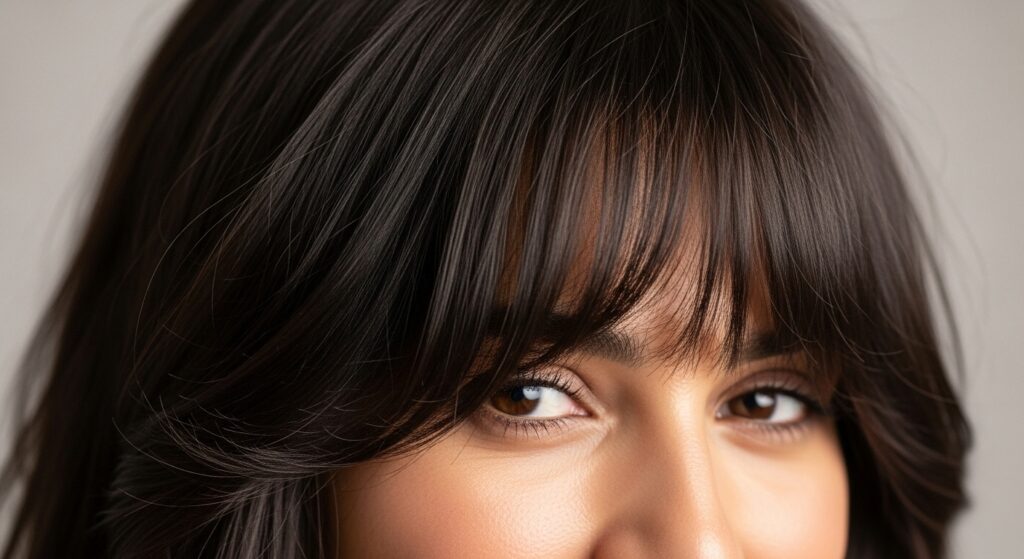
Wolf Cut Breakdown
Now onto the viral sensation, the wolf cut hairstyle.
Choppy Layers
This cut doesn’t hold back—it’s wild, chunky, and fearless.
- Layers are intentionally extreme
- Short in the front, long in the back
- More disconnected than the shag
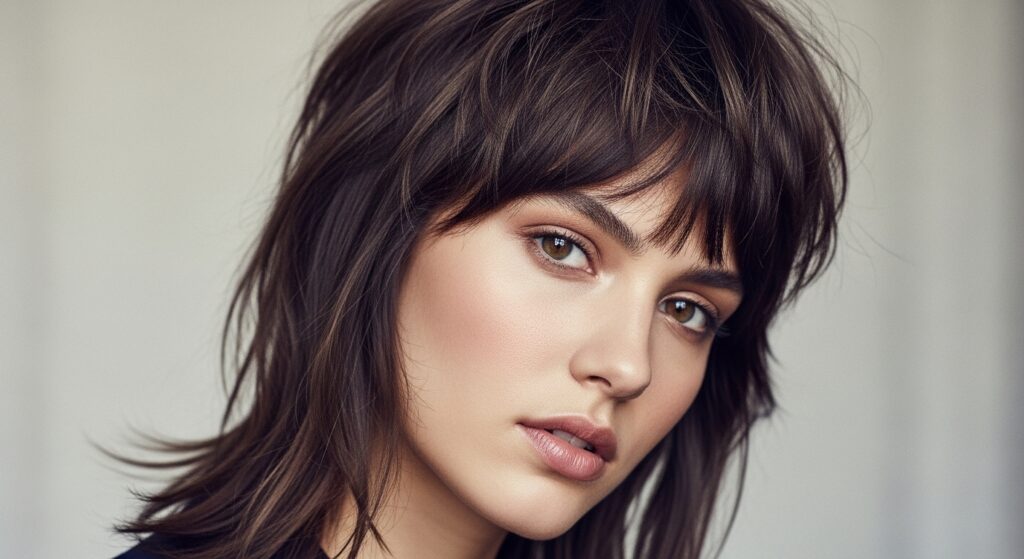
Mullet Roots
Let’s be honest—this cut owes a lot to the mullet.
- Short volume-heavy crown
- Long, wispy or straight bottom lengths
- A little rebellious, a lot iconic
Really, there is just no getting away from the mullet in giving credit to the cut. In a way, the hairstyle is even slightly rebellious, definitely more than a bit idolized. (The type of look that the low taper fade has had a quiet but powerful effect transforming traditional men’s haircuts with a contemporary touch.)
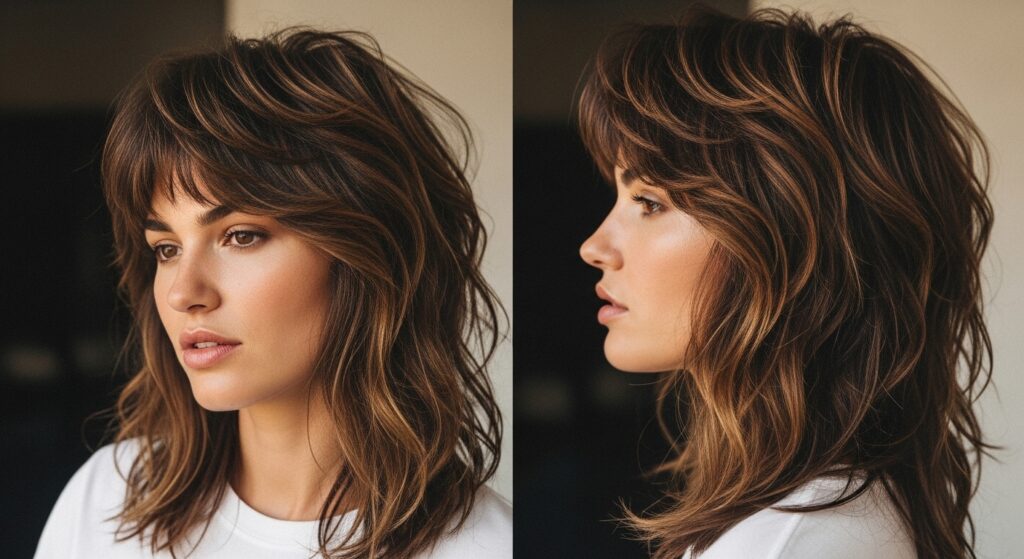
Side-by-Side Comparison: Which One’s for You?
Okay, here’s where we get down to the layered haircut difference between the two. What should really sway your decision?
Face Shape
- Shag Haircut: Best for oval, heart, and square faces. The layers balance sharp features and soften wide cheekbones.
- Wolf Cut: Great for round or long faces. The volume on top and length below adds structure.
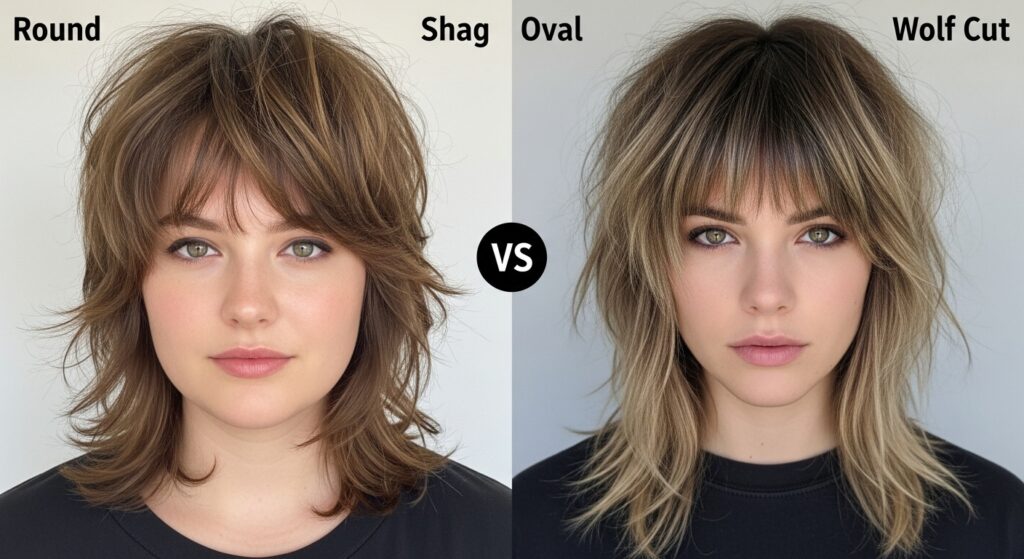
Hair Type
- Shag: Wavy, curly, or fine hair types thrive with shags. They help add volume without frizz.
- Wolf Cut: Best for thick, straight, or dense hair that can handle the bold layering.
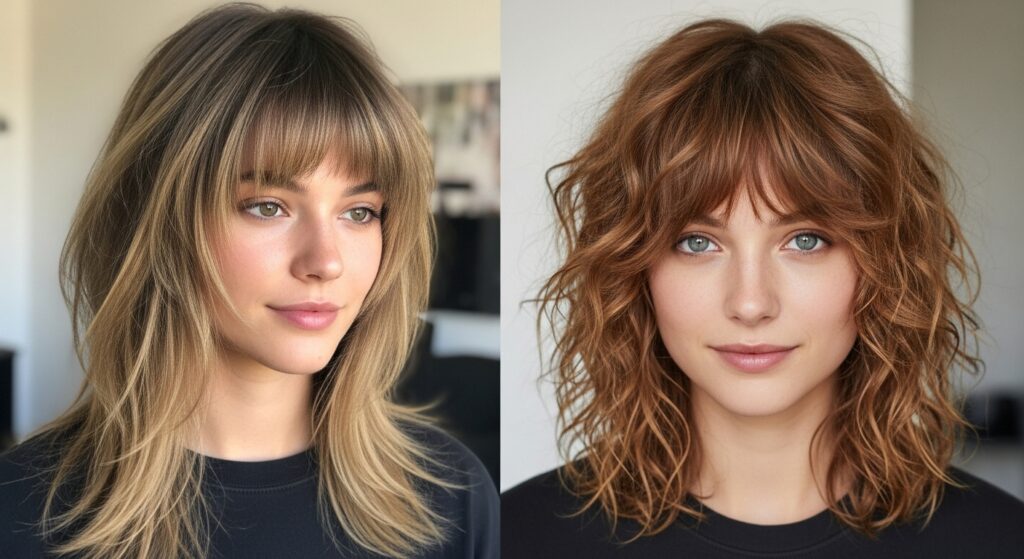
Maintenance
- Shag: Low maintenance. Grows out beautifully. Air-dries well.
- Wolf Cut: Higher maintenance. Needs shaping more often. Styling products are essential.
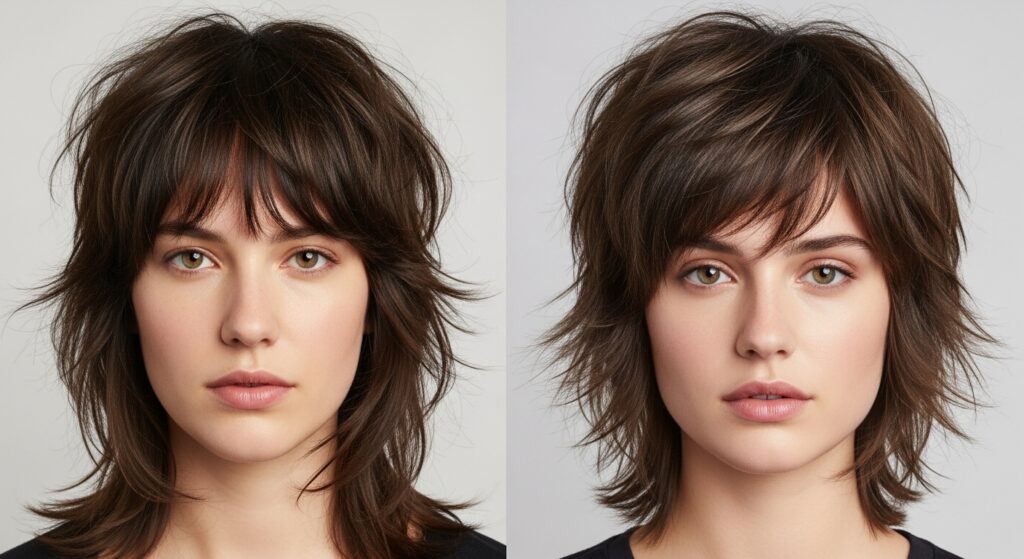
Hybrid Styles: Shaggy Wolf Cuts
Can’t decide? You don’t have to. The hybrid wolf cut is very much a thing.
This combo takes the crown volume of a wolf cut and blends it with the soft shaping of a shag.
- Face-framing stays soft and feathered
- Back layers stay long but not too mullet-y
- Works amazingly on wavy or thick hair
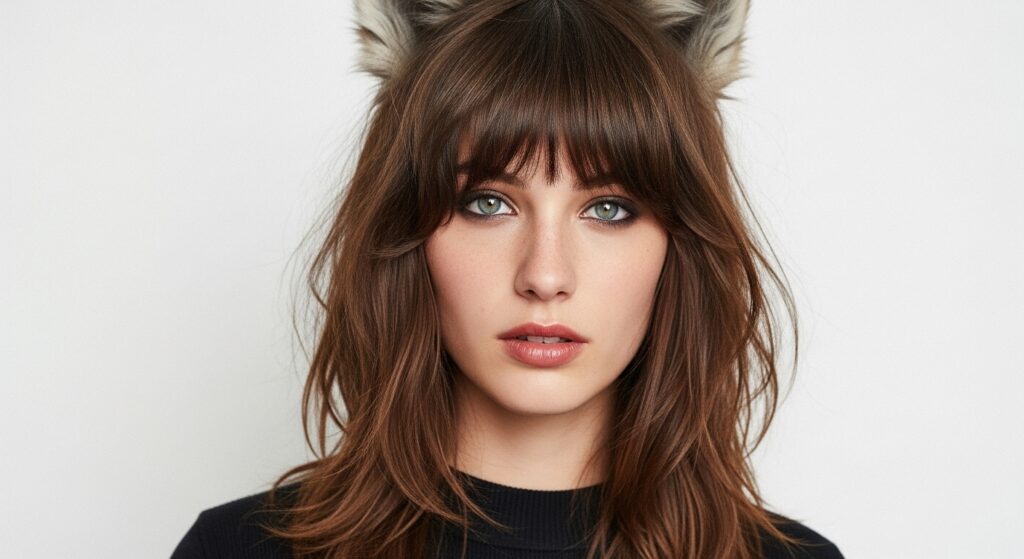
How to Ask Your Stylist for the Right Cut
Here’s where people usually panic in the salon chair. Don’t just say “give me a wolf cut” or “shag it up!” Be specific.
Bring inspiration pics
Tell them your styling routine
Explain how often you want trims
Ask for layered movement not just “volume”
Use phrases like:
- “I want soft face-framing layers with a shaggy vibe”
- “I’m open to choppy layers but don’t want a full mullet”
- “Can we keep the bangs curtain-style but not too thick?”
Feel sure not to just stay like “give me a wolf cut” or “shag it up!” Be exact giving way to suggestions like: “Please don’t make the bangs too chunky, but still a curtain.” (If you’re short or too clean for work, you can also check these professional hairstyles for men and choose what fits better to your personality.)
FAQ
Q: Is the wolf cut just a shag haircut with more drama?
A: Kinda! The wolf cut takes the basic shag shape and turns up the volume and disconnection. Think of it as the shag’s punky little sister.
Q: Can I get a wolf cut with curly hair?
A: Yep—but make sure your stylist understands curl shrinkage. The layers can bounce up more than expected.
Q: How do I style a shag without heat?
A: Air-dry with a curl cream or sea salt spray. Scrunch and let it be messy. The shag thrives in chaos.
Q: What if I hate bangs? Can I still rock a shag?
A: 100%. You can skip the bangs and just keep those soft face-framing layers. Totally optional.
Q: Does the shag haircut work on thin hair?
A: Yes—but go for fewer, longer layers to avoid making it look too sparse.


